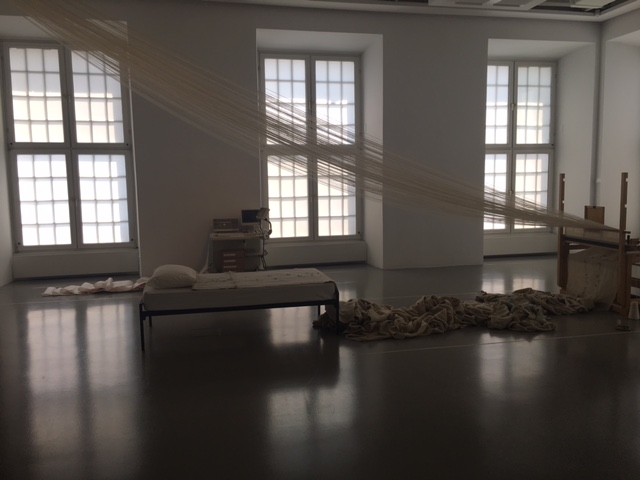Documenta 14 in Kassel... (Part I)
4:19 p.m.
08/07/17 - With a large curatorial team and a big budget, this documenta approaches a political and cross vision of our time. Its starting point states that an artwork, no matter its format or type, can bring forth, with its poetical power, the inner tribulations of an artist. These artists internalize, as we all do, the disrupted world in which we live, but they have the capacity of expressing it.
For this documenta, curator Adam Szymczyk presented almost one hundred artists, distributed all over Kassel, but focusing on Friedrichsplatz. Szymczyk's free style was a novelty for this exhibition, since for the first time it was held in two cities: Athens and Kassel. Today, when almost 30 days remain before closure, he received more critics than praises. For example, an article was published reminding him that, as curator, he is responsible for the custody of the artworks. As it happens, at the begining, the signs next to the artworks were so poor (or even non existent), that it was hard to know who was the artist on display, specially when many of them are unknown. Although many exhibitions use no references, as if they were a stigma or as a new sign of the times, in documenta, where many artists created exclusive pieces for the occasion, it is a matter of respect. Plus, in certain cases, an explanation is essential, since the exhibition lights a path towards what is happening in the arts outside the markets.
The truth is that much is expected from documenta, and this year's, as the previous ones, it puts a spotlight on the social and political conditions of our planet. Unfortunately, the d14 makes it half-way, because it repeats again and again the issue of migration and the journey towards security and freedom. But it only shows it. Of course, you may argue that an art exhibition does just that: exhibits. It can propose no solutions. On the other hand, other concerning issues were left out, such as the overwhelming saturation of images or other problems of the visual art world, where sometimes even minor expressions can help us understand the concerns of out time.
Collective Autobiography, by María Loizidou (2013)
Materials: cypress wood and other materials.
Fridericianum
Slumber, by Janine Antoni (1994)
Different materials
Fridericianum
No olvidado, by Andrea Bowers
Technique: graphite on paper with the names of the Mexicans that died crossing the border.
Abacus, by George Lappas (1983)
Material: metal
Fridericianum
Eight Suitcases with Rubbish from a Beach, by Alexis Akrithakis (1972)
Fridericianum
Acropolis Redux (The Director’s Cut), by Kedell Geers (2004)
Materials: fences and steel shelves
Fridericianum
When We Were Exhaling Images, by Hiwa K (2017)
Materiales: vitrified clay pipes, laminated beams,
furniture, various objects
Friedrichplatz frente a Dokumenta Halle























0 comentarios